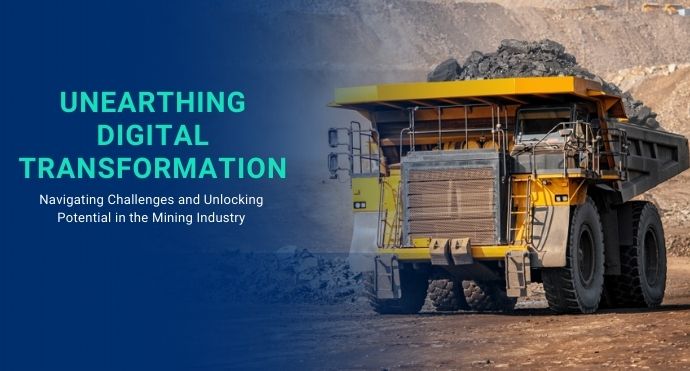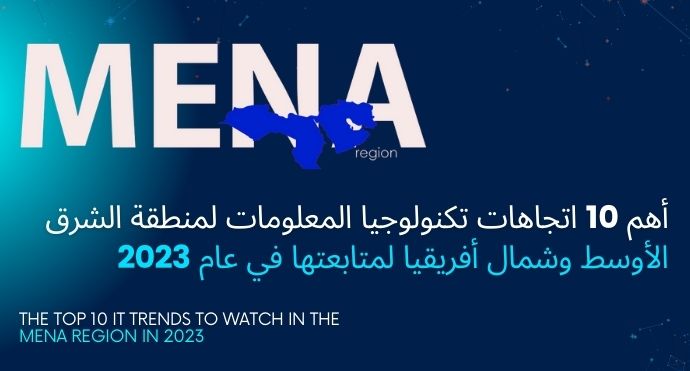Digital transformation has emerged as a transformative force in the mining industry, revolutionizing traditional practices and paving the way for improved operational efficiency, safety, and sustainability. However, embracing digital technologies in mining is not without its challenges. In this blog post, we will delve into the key challenges faced by the mining industry in its digital transformation journey and explore strategies to overcome them. Additionally, we will highlight the potential impacts of successful digital transformation in the mining sector through data and analysis.
Challenges of Digital Transformation in the Mining Industry:
1. Legacy Infrastructure: Outdated and fragmented infrastructure is a major hurdle for digital transformation in the mining industry. According to a survey conducted by EY, 70% of mining companies reported that legacy systems and infrastructure were the biggest barriers to adopting digital technologies effectively.
2. Data Management and Integration: Mining operations generate vast amounts of data from various sources, including sensors, drones, and connected equipment. However, managing and integrating this data for real-time analysis and decision-making can be complex. In a study by Accenture, 80% of mining executives acknowledged that data management and integration were significant challenges in their digital transformation initiatives.
3. Cybersecurity Risks: As mining operations become more digitally connected, the risk of cybersecurity threats increases. The mining industry is an attractive target for cyberattacks due to its critical infrastructure and valuable intellectual property. According to a report by Deloitte, 41% of mining companies experienced at least one cybersecurity incident in 2020, highlighting the urgent need for robust cybersecurity measures.
4. Workforce Skills and Culture: Digital transformation requires a skilled workforce proficient in data analytics, automation, and emerging technologies. However, the mining industry faces a shortage of talent with these specialized skills. A study by McKinsey found that 61% of mining executives identified a lack of digital skills as a significant barrier to digital transformation. Additionally, fostering a culture of innovation and change can be challenging in an industry traditionally rooted in conventional practices.
Strategies to Overcome Challenges:
1. Infrastructure Modernization: Invest in upgrading legacy infrastructure, such as replacing outdated equipment and improving connectivity in remote areas. By modernizing infrastructure, mining companies can lay a solid foundation for successful digital transformation. For example, Rio Tinto, a leading mining company, invested in autonomous haul trucks and remote operation centers, resulting in increased operational efficiency and safety.
2. Advanced Data Management and Analytics: Implement integrated data platforms that enable seamless data collection, management, and analysis. This includes using technologies like cloud computing and artificial intelligence (AI) to process and interpret vast amounts of data in real-time. Advanced analytics can provide actionable insights for optimizing processes, predicting maintenance needs, and enhancing overall operational performance.
3. Cybersecurity Preparedness: Prioritize cybersecurity by implementing robust measures such as multi-factor authentication, encryption, and continuous monitoring systems. Collaborate with cybersecurity experts to conduct regular audits and penetration testing to identify vulnerabilities and proactively address potential threats. Training employees on cybersecurity best practices is also crucial in creating a security-aware culture.
4. Workforce Development and Culture Shift: Invest in upskilling the existing workforce and attracting new talent with expertise in digital technologies. Partner with educational institutions and industry organizations to develop specialized training programs tailored to the mining sector’s needs. Foster a culture of innovation by encouraging collaboration, providing incentives for digital initiatives, and celebrating successful digital transformation projects.
Impacts of Successful Digital Transformation in the Mining Industry:
1. Operational Efficiency: Digital transformation can significantly improve operational efficiency in mining. For example, the implementation of autonomous mining equipment and real-time data analysis can optimize processes, reduce downtime, and enhance productivity. McKinsey estimates that digital transformation initiatives could lead to a 15-20% reduction in mining costs.
2. Safety Enhancement: Digital technologies can enhance safety in mining operations. Remote-controlled equipment and real-time monitoring systems enable operators to work in safer environments, reducing the risk of accidents. Predictive analytics can also help identify potential safety hazards, allowing proactive measures to be taken.
3. Environmental Sustainability: Digital transformation can contribute to sustainable mining practices. By optimizing resource utilization and energy efficiency through advanced analytics, mining companies can reduce their environmental footprint. Additionally, technologies like drones and remote sensing enable precise monitoring of environmental impacts, facilitating better compliance with regulations.
Conclusion:
Digital transformation presents both challenges and opportunities for the mining industry. By addressing legacy infrastructure, improving data management and integration, prioritizing cybersecurity, and investing in workforce development, mining companies can overcome these challenges and unlock the full potential of digital technologies. Successful digital transformation in mining can lead to enhanced operational efficiency, improved safety standards, and a more sustainable approach to resource extraction, ultimately shaping the future of the industry.



